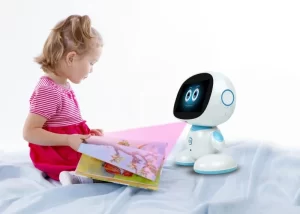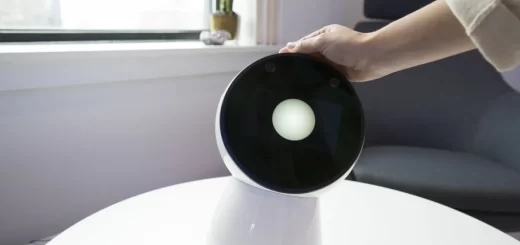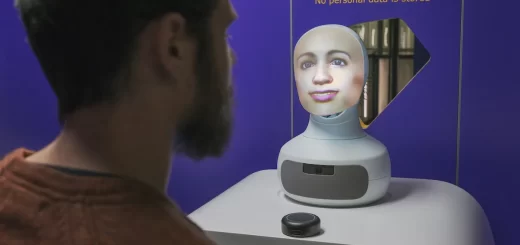Misa robot review, features, advantages, disadvantages and Is Misa robot worth buying?
Misa is a social robot, it can interact with children through voice commands and facial expressions. This can make learning more fun and engaging for students. Social robots like Misa teach students about different cultures and social interactions.
Misa Robot in Education
Misa could combine learning with fun activities to keep students engaged. Misa is advertised as being KidSafe certified, which may give parents peace of mind when using it for educational purposes. Misa has limitations on content and prioritizes safety for children.
Misa can be used to teach good habits, which could be a fun way to integrate social-emotional learning into the classroom. Misa can be multilingual, which could be a benefit for classrooms with diverse students.
Misa is a social robot, meaning it can interact with students through voice commands and its touchscreen interface. This could make learning more engaging and interactive compared to traditional methods. Misa may be able to adapt its teaching approach based on a student’s individual needs and learning style.
Educational apps designed for Misa could incorporate game mechanics like points, badges, and leaderboards to motivate students. Misa’s potential for multilingual capabilities could be helpful for students who are learning English as a second language or who have special needs.
Misa can interact with children through voice commands and respond with facial expressions or movements. There’s a mention of Misa having “edutainment” features and STEM learning apps. This suggests it might be able to gamify learning experiences or provide educational content in science, technology, engineering, and math.
Misa used to help children with special needs. This might be because its interactive nature can hold a child’s attention and make learning new skills more stimulating. Misa is advertised as having “edutainment” features, which suggests it combines educational content with entertainment elements. This can make learning more enjoyable and help information stick better.
The Misa robot has the potential to be a valuable tool in education, It likely works best as a supplement to traditional classroom instruction, rather than a replacement for qualified teachers.
Advantages of Misa Robot in Education
Misa‘s interactive nature can make learning more fun and engaging for students, potentially leading to improved focus and information retention. The robot might be able to tailor its interactions to each student’s individual needs and learning pace. Interacting with a social robot like Misa could help students develop social skills such as communication and collaboration.
Misa‘s interactive features could help students with special needs stay engaged and motivated while learning by providing a stimulating and focused learning environment. If Misa can interact with students in a social way, it may help students who struggle with social interaction develop their communication skills.
A fun and interactive robot could create a more positive and stimulating learning environment for students. This can be especially helpful for students who struggle with traditional learning methods. If Misa can be programmed to adapt its teaching approach to individual student needs, it could provide a more personalized learning experience.
Misa is a social and interactive robot that can make learning more engaging and enjoyable for children, Misa can make learning more fun and engaging for students, potentially leading to better information retention. This can be especially helpful for students who struggle with traditional classroom learning methods.
Misa may be able to tailor its interactions to each student’s individual needs and learning pace. This could be beneficial for students who need extra help or those who are more advanced. Misa can provide a stimulating and interactive way to learn new skills and improve focus.
Disadvantages of Misa Robot in Education
Misa robots may be expensive to purchase and maintain, which could limit their accessibility in schools. If the robot malfunctions, it could disrupt lessons and leave teachers scrambling for alternative methods. While technology can be a useful tool, overdependence on robots could hinder the development of critical thinking and problem-solving skills in students.
Educators may need additional training to effectively integrate the Misa robot into their lesson plans. Robots may not be able to provide the same level of nuanced instruction and guidance as a human teacher. Robots may not be able to understand or respond to students’ emotional needs in the same way a human teacher can.
It may be difficult to assess a student’s true understanding of a subject if they are primarily learning through robot interaction. There are ongoing discussions about the ethics of using robots to replace human teachers or provide a significant portion of a student’s education.
Misa might not be able to replace a human teacher’s ability to provide a well-rounded education, including critical thinking and social-emotional learning. A dependence on robots in education could lead to a decrease in human interaction and the development of social skills in students.
If the Misa robot malfunctions, it could disrupt classroom learning. There are potential privacy concerns around data collection by the robot, especially when used with children. The effectiveness of the Misa robot in education would likely depend on how it’s implemented in the classroom.
It would be important for teachers to remain actively involved in the learning process and to supervise the robot‘s interactions with students. More research is needed to determine the long-term impact of using robots like Misa in education.
There’s a risk that students may become overly reliant on robots for learning and struggle with traditional methods. Educators would need proper training to effectively integrate Misa robots into their curriculum and ensure they are used appropriately.
Technical malfunctions or software problems with Misa could disrupt lessons and cause frustration. Misa may not be suitable for teaching all subjects or age groups. It likely works best in specific situations or for supplemental learning.
There are some ethical considerations surrounding the use of robots in education, such as potential biases in programming or the replacement of human interaction with a machine. Robots cannot replicate the emotional intelligence and social cues that human teachers can provide.
Robots may struggle to adapt to unexpected situations or respond to individual student needs in real time. the Misa robot has the potential to be a valuable tool in education, It should be used to supplement, not replace, traditional teaching methods.
You can follow Science Online on Youtube from this link: Science online
You can download Science Online application on Google Play from this link: Science Online Apps on Google Play
Elias robot review, advantages, disadvantages, and What robot teaches languages?
Robot teachers use, types, advantages, and disadvantages
Educational robotics, Robot teachers, Social robots review, features advantages and drawbacks
Artificial intelligence in education, AI tutors features, advantages and disadvantages
Pros and cons of technology in education and Can technology replace teachers?
The importance and uses of educational robotics for students




